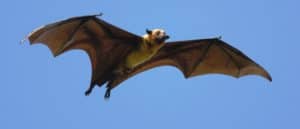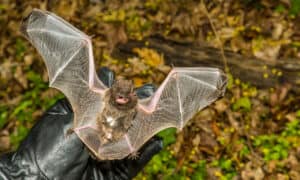In the animal kingdom, bats often get a bad rap. However, these unique flying mammals positively contribute to our ecosystem through pest control and pollination. However, insects and flowers are sparse in many parts of the world during the cold season. This leads to an important question: What do bats eat in the winter?
The answer ultimately depends on the type of bat. Some bats eat their regular diet, others eat an adapted diet, and some eat nothing at all! In this article, we cover the different types of bats, what they eat in the winter, and why.
Types of Bats
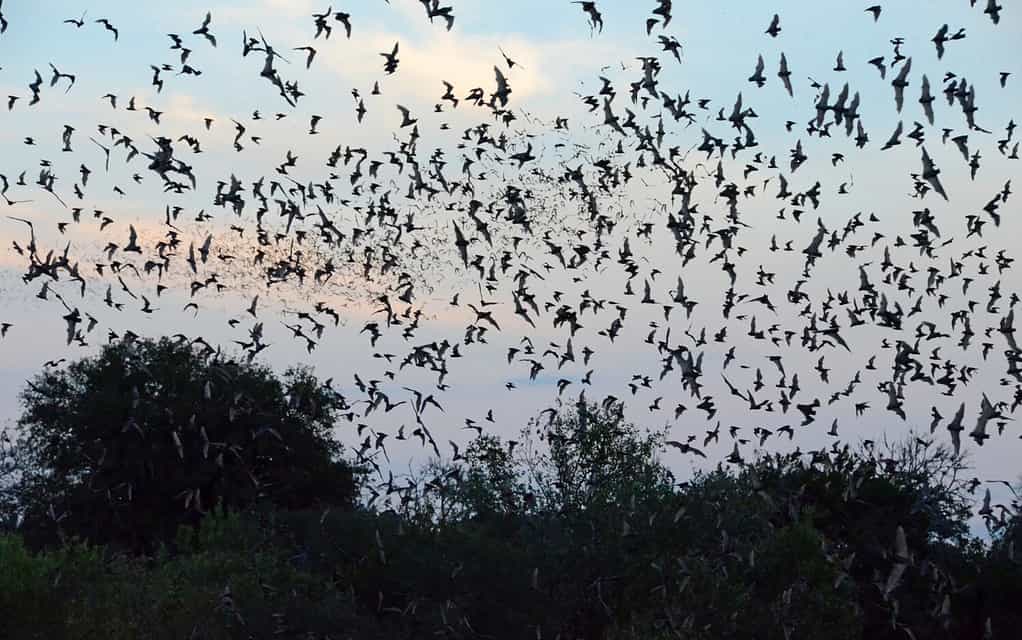
There are over 1,400 species of bats.
©Jeff Reeves/Shutterstock.com
There are more than 1,400 bat species worldwide, each with a unique diet and lifestyle. However, clarifying what bats eat in the winter ultimately depends on whether the bats migrate or hibernate.
It’s important to note that some bats are exceptions to the rule. For example, silver‐haired bats migrate and hibernate! They journey somewhere a bit warmer and stock up on insects before tucking in for the winter. Bats in warmer areas don’t hibernate or migrate but may enter a sedate state during particularly hot periods.
Do Bats Eat In the Winter?
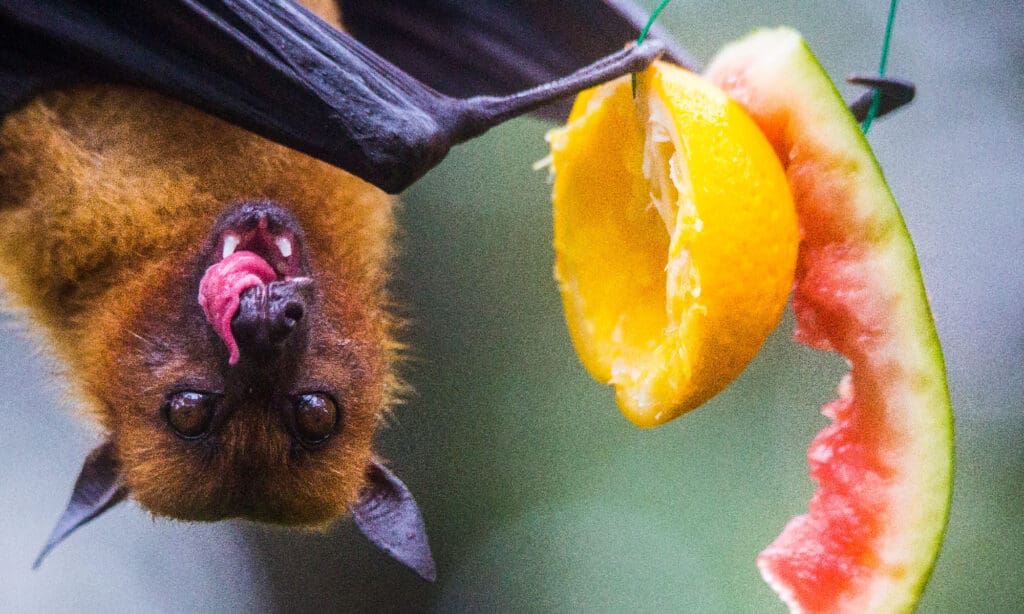
Different bat species eat different things. Some are insectivores, some are frugivores, and a few are carnivores!
©Natalia Golovina/Shutterstock.com
Hibernating bats typically don’t eat during the winter. They enter a state called “torpor,” which minimizes energy consumption. During torpor, bats may even stop breathing for an extended period to conserve energy.
Some bats cycle in and out of torpor during the winter to eat, but those in cold climates, like the little brown bat, may remain in their hibernacula (hibernation spot) for six months. The hibernacula is often an insulated, dark area, like a cave, mine, or even your chimney!
Migratory bats and bats that neither migrate nor hibernate typically stick to their usual diet. With that in mind, here are five common foods bats eat in the winter.
Insects

Many bats eat mosquitoes and other insects. They’re considered integral to pest control.
©Kushal Bose/Shutterstock.com
Approximately 70% of the world’s bats are insectivores, thriving on a diet of mosquitos, crickets, ants, and other bugs. These bats often eat their body weight in bugs in a single night, helping control mosquito populations in swampy areas.
During the winter, migratory bats will continue to eat insects. Hibernating bats eat more in the weeks leading up to hibernation to build their fat stores for the winter. Insectivorous bats who are woken early from hibernation without food sources often succumb to the winter cold, especially if infected with white-nose syndrome.
Scientists at Bat Conservation International have been hard at work creating “bug buffets” for hibernating bats affected by white-nose syndrome. This ensures ample food availability should the bats awaken during the winter to replenish their energy stores and go back to sleep. Early experiments have proven effective in helping bats survive the winter and recover.
Fruit
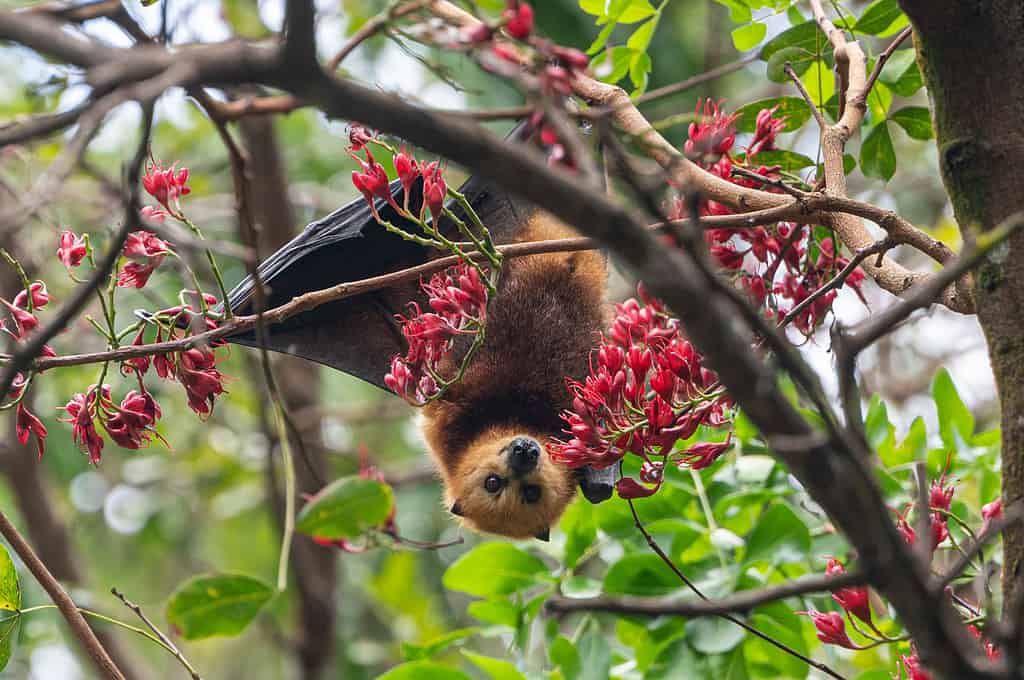
Some bats, like the flying fox, eat fruit!
©Andi Edwards/iStock via Getty Images
Several species of bats are frugivores, eating a diet mainly comprised of fruit. While fruit bats are the obvious fruit-eaters, the misunderstood flying fox bat also lives off nature’s candy. Flying foxes are the largest bat species, with wingspans reaching 5-6 feet! While their appearance may be intimidating, flying foxes are not carnivores and play an integral role in pollinating crops.
Nectar
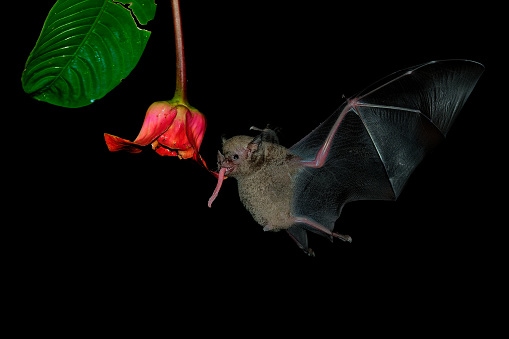
Pallas long-tongued bat (
Glossophaga soricina) is a South and Central American bat with a fast metabolism that feeds on nectar.
©phototrip/iStock via Getty Images
Flying foxes aren’t the only bat species contributing to pollination. The lesser long-nosed bat and Mexican long-tongued bat are migratory bats that drink nectar. Many popular fruits, including bananas and mangoes, depend on these bats for pollination. Nectar bats also pollinate agave plants, so no bats, no tequila.
Blood
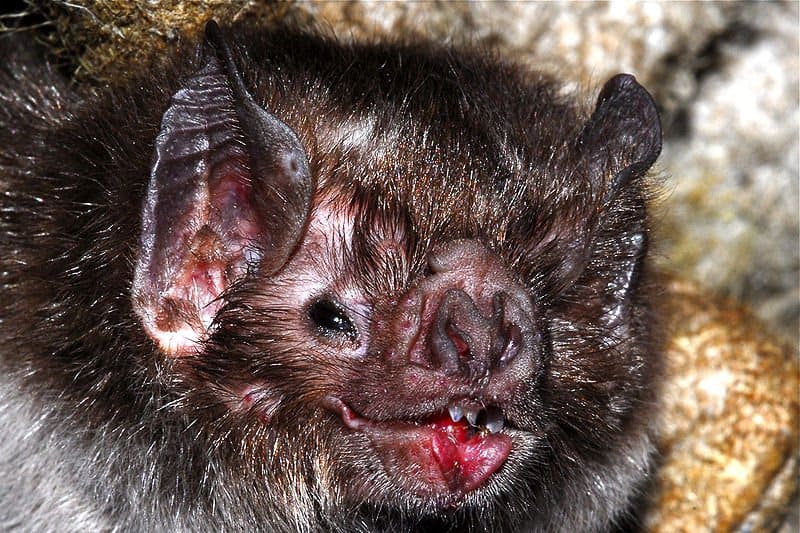
The
vampire bat
drinks blood but doesn’t attack humans.
The notorious vampire bat lives entirely on the blood of other animals, and these habits don’t change during the winter months.
Despite their intimidating name and dietary habits, vampire bats rarely interfere with humans. These timid creatures typically feed on livestock, which can spread rabies and cause farmers grief. However, mesh barriers can deter vampire bats.
Small Animals
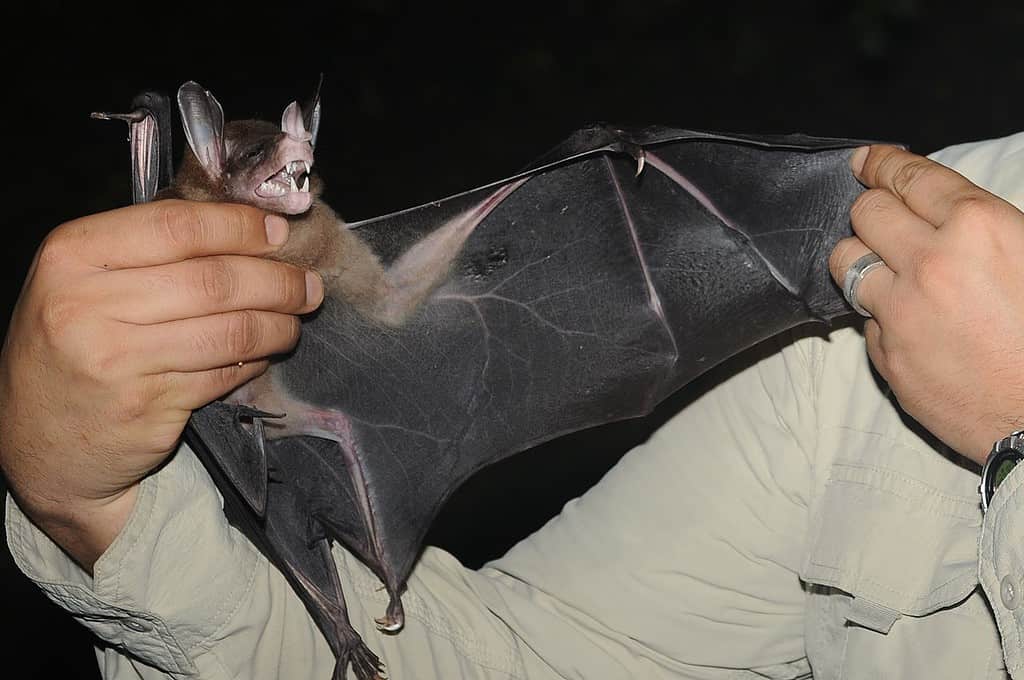
The spectral bat eats small animals.
©Marco Tschapka / CC BY-SA 3.0 – License
Carnivorous bats are rare, but they do exist. Some species, like the spectral bat, will eat small animals like birds, reptiles, amphibians, and other bats!
The spectral bat and other true carnivorous species share the genus Vampyrum with the vampire bat. These bats change their diets on availability during the winter months.
What Happens if Bats Don’t Find Enough Food?
Unfortunately, bats have an incredibly high metabolism. They will die if they don’t find enough food, especially during the winter.
However, bats are caring, social animals known for sticking with their colony and caring for each other. Vampire bats will regurgitate blood to feed other bats who were less successful during their hunt.
As bats are mammals, mothers nurse their young with milk until they can hunt and sustain themselves individually.
Providing safe roosting spots for bats keeps them out of your walls and chimney and helps with pest control around your home.
The photo featured at the top of this post is © Natalia Golovina/Shutterstock.com
Thank you for reading! Have some feedback for us? Contact the AZ Animals editorial team.



